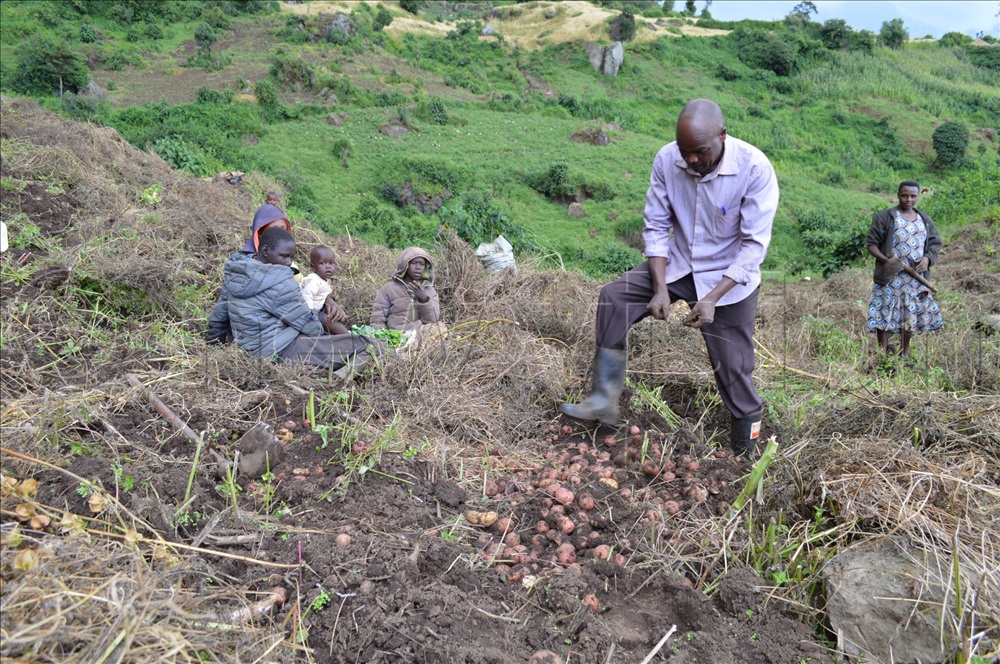By Umar Nusbuga
Irish potatoes are a starchy tuber crop from the perennial solamuntubersum of the solsnaceae family. They are mainly grown in the cool highland areas as a food crop as well as a vegetable.
Potatoes are the world’s most widely grown tuber crop and the fourth largest crop in terms of fresh produce.
Irish potato in Uganda is a good food security crop and is grown in the highland areas of South Western Uganda in two districts, Kabale and Kisoro.
In the two districts, Irish potato is both a staple food and the main source of income. The two districts produce over 60% of the national crop.
As a result of increased demand, especially in the urban areas production has been intensified in the traditional zones and is spreading into central Uganda and other areas.

Production of Irish potatoes in Uganda is entirely for domestic use as export opportunities are still limited.
Irish potatoes grow well in areas that receive regular rainfall and have a cool climate with temperatures ranging from 10 – 230c.
The major growing areas include Kisoro, Kabale, Kasese, Mbale, Kapchorwa and areas around Mount Rwenzori. This is because of the low temperatures that prevail there.
Irish Potatoes do best in a loose, well-drained, slightly acid soil. Poorly drained soils often cause poor stands and low yields. Heavy soils can cause tubers to be small and rough.
The crop requires good amounts of rain/water at germination, but less water towards harvest so that it becomes firm.
Varieties in Ugandan
Irish potato varieties grown include; Rutuku, Victoria, Kisoro, NAKPOT 1, NAKPOT 2, NAKPOT 3, Kruzer and Sangema. Victoria is the most commercially grown variety. It is high-yielding, early maturing and tolerant to bacterial wilt.





